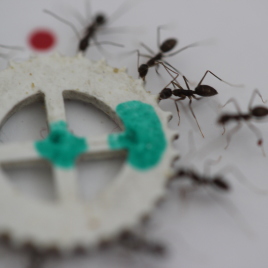It takes a lot of coordination for a group to carry a large load together. It’s a rare ability in the animal world, but one shared by ants and humans. Like humans, longhorn crazy ants (Paratrechina longicornis) use individuals for steering the direction of the group. This collective movement appears to arise by the […]
Tag: evolution
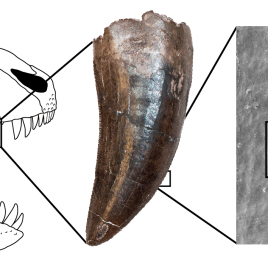
T. Rex’s secret weapon: Revealing a unique tooth structure
The unique tooth structure of carnivorous theropods such as Tyrannosaurus rex allowed them to tear through the flesh and bones of other dinosaurs with ease, and likely led to their success according to new research. The research team found that the deeply serrated structure, and the special arrangement of tissue inside, strengthened the teeth and […]
Boa constrictors’ victims die of circulatory arrest, not suffocation
Boa constrictors do not kill their victim by suffocation, but by quickly stopping blood flow. When attacking, boas apply several loops of their body against the prey’s chest. This not only allows them to compress the vital organs directly, but may also enable them to monitor the victim’s heartbeat according to the researchers. Researchers inserted […]
The importance of singing well
The reproductive success of male song sparrows, one of the most abundant native sparrows of North America, depends on their song repertoire, not the quality of their territory, according to new research. The researchers found that males with a larger repertoire produced and fledged more offspring annually. The study also found that these males moved […]
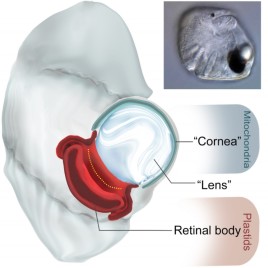
Complex eye found in single-celled organism
Researchers have found many of the components required for a complex eye in a single-celled organism, providing insight into the evolutionary origins of the eye. The findings show how a complex system can evolve in a simple organism. The research team examined warnowiids, a single-celled organism, and found that they have ocelloids, an eye-like structure […]
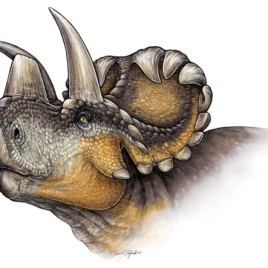
New species of horned dinosaur provides insight into Triceratops family evolution
A new species of horned dinosaur discovered in southern Alberta provides new information about the evolution of the Triceratops family of dinosaurs, the Ceratopsidae. The new species, Wendiceratops pinhornensis, is identified by 184 bones from at least four individuals. The Wendiceratop is an early species of horned dinosaur, living alongside the Albertaceratops, approximately 79 million […]
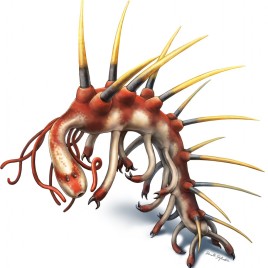
Completing the puzzle of arthropod evolution
Newly discovered fossils from the Burgess Shale region are providing scientists with evidence of the evolutionary history of arthropods, a group including insects, spiders and crustaceans. The fossils have also allowed scientists to gather a complete picture of what Hallucigenia, an arthropod existing 508 millions years ago, looked like. The new fossils show that Hallucigenia had […]
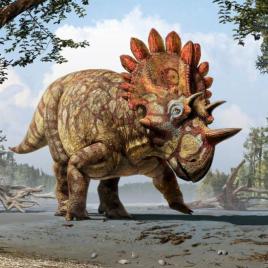
New species of horned dinosaur found in Alberta
Bones found 10 years ago along the Oldman River in Alberta belonged to a new species of horned dinosaur. This is the first time an horned dinosaurs species has been discovered in Alberta. According to a new study, this dinosaur is similar in many respects to Triceratops, except that its nose horn is taller and the […]

Oldest-known stone tools pre-date Homo habilis
Stone tools dated to 3.3 million years ago, discovered in Kenya, indicate that early humans were making tools much earlier than previously thought. The stone-tool culture associated with the genus Homo has commonly been dated back to around 2.6 million years ago, 700,000 years after this recent discovery. Researchers found markings on stone-made anvils, hammers […]
Hearing: How loud noises trigger a protective reflex
A study of mice has lead scientists to believe they are closer to understanding what triggers the brain to reduce sound amplification in response to a loud environment. Researchers report that this protective reflex is controlled by Type II fibres in the ear. These fibres were previously shown to be necessary for speech discrimination in […]
Toxic algae can “smell” predators
Algae can smell predators coming their way, according to a new study. Small crustaceans, zooplankton copepods, feed on algae and researchers observed that they release small fat molecule called copepodamides into the water. When exposed to these molecules an algae, Alexandrium minutum, also known to form toxic algal blooms, will increase 20-fold their paralytic toxin […]
Why are the Dutch so tall?
The Dutch are currently the tallest people on earth, but 200 years ago they were among the shortest. A new study tries to explain how the Dutch population has grown 20 cm in average height in less than two centuries. Researchers observed in the Netherlands that taller men and average height women had more children […]
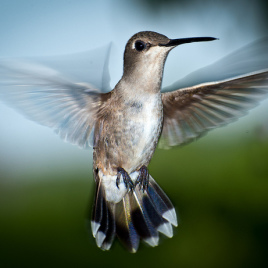
Hummingbirds could improve drones’ stability
Albatrosses, airplanes, and helicopters all share long narrow wings which provide good aerodynamic efficiency. In contrast the wings of hummingbirds are short and stubby. Conventional aerodynamic theory predicts this should makes them inefficient. In a new study, researchers resolved some of the contradiction by finding that while slender wings are indeed most efficient at a […]
Earliest known giant filter-feeding sea creature
New fossils from Morocco represent the earliest known giant filter-feeding sea creature, Aegirocassis benmoulae. These creatures could exceed two meters in length and fed on plankton much the same way modern whales do. Scientists think the animals went extinct because there was not enough plankton at the time (around 450 million years ago) to allow […]
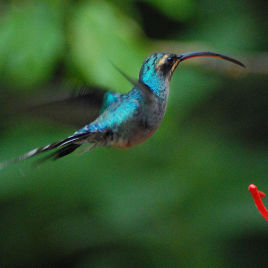
Pollinator-recognition in plants
Researchers have shown that a plant can discriminate among its pollinators. The plant, Heliconia tortuosa, produced 5.7 times as much pollen when it was visited by particular species of hummingbirds than other species or insects. The researchers suggest this ability enables the plant to maximize its reproductive strategy as the favoured hummingbirds travel greater distances, […]
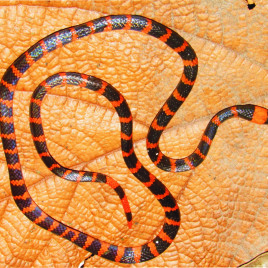
Deadly coral snake venom
Researchers now understand why coral snake venom is so deadly and this knowledge could help provide insight into the biology of human diseases and conditions. Unlike most snake venoms which kill by paralyzing their victims, the venom of the coral snake (Micrurus mipartitus) causes deadly seizures. Scientists have discovered the venom’s active ingredient is a […]
